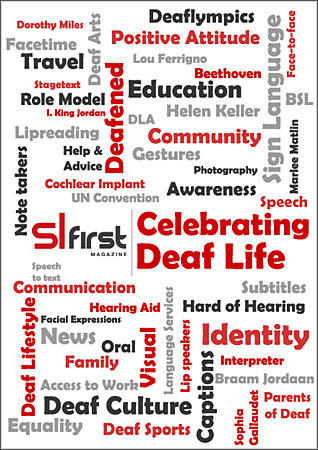Communication Aids4th November 2013
Helping Deaf parents during early parenthood
A short article briefly talking about some of the issues faced by Deaf parents of a hearing child

How do you manage when you are Hard of Hearing or Deaf Parents of a Baby?
Babies cry. It's how they communicate hunger, pain, fear, and much more. They can feel too cold or too hot, they may need a nappy changing, need to burp or they just feel like crying. A child’s safety is one of most important things for parents. Whilst most of us simply hear our babies crying at night, deaf or people with a hearing impairment can’t.
A regular baby monitor with an audio signal, video screen, room temperature etc. are all useless if you are asleep and suffer from hearing difficulties, no amount of flashing lights are going to disturb you. Luckily, baby monitor technology has evolved and there are some monitors now available to combat this scary problem, designed specifically to favour deaf or hard of hearing parents. Vibrating alarms and external pads that slip under the pillow to shake a parent awake at night and/or a flashing light system for the daytime are essential. These added features alert a deaf parent every time the baby is in need of attention.
Craig and Hannah Butcher from Beckles in Suffolk are both profoundly deaf, so knowing when 12 month old Oliver is upset, is their biggest hurdle, especially when removing their hearing aids during the night.
Both Hannah 37, & Craig 34, love gadgets and write for the Tech website geekoid.co.uk, had felt deprived of today’s modern equipment that would cater for Deaf parents.
 “After despairing at the bulky and uninspiring designs for deaf people, provided by Social Services, we lusted after the newest and sleek products that were used by hearing people. We had a pager that we carried everywhere even at night time. The receiver was plastic, heavy, and too many wires.” Web Developer Craig continues, “Now we are using the amplicomms V120, specifically for deaf parents it has a built-in vibrator alert and separate vibrating pad that slips under the pillow and shakes us awake if Oliver’s crying.”
“After despairing at the bulky and uninspiring designs for deaf people, provided by Social Services, we lusted after the newest and sleek products that were used by hearing people. We had a pager that we carried everywhere even at night time. The receiver was plastic, heavy, and too many wires.” Web Developer Craig continues, “Now we are using the amplicomms V120, specifically for deaf parents it has a built-in vibrator alert and separate vibrating pad that slips under the pillow and shakes us awake if Oliver’s crying.”
Buying a Baby Monitor for Parents with Hearing Impairments and what you need to know:
Built-in Vibrating alarm and/or a flashing light system
If you’re a deep sleeper, a flashing light system may not be enough and its safer to have a monitor that combines both a vibrating alarm and flashing light system.
External Vibrating Pad: Placing a pad under the pillow to shake you awake if the baby is disturbed, you will be too.
Operating range: Baby monitors should have at least 100 meter range through walls and floors and have a warning signal when you are out of range.
Sound Quality: High audio clarity with little static and interference. A good monitor should give you the ability to adjust the volume and the microphone sensitivity (so you won’t be disturbed for every little murmur!)
2-Way Communication: A useful facility to reassure your baby without having to enter the room
Room temperature display Babies rooms should be between 16 and 20 degree’s, ideally 18 degrees.
Article by Marcia Brogan
posted in Technology / Communication Aids
4th November 2013





